"People are beginning to rediscover old bathing traditions"
London Design Festival 2016: communal bathing culture is experiencing a global revival according to curator Jane Withers, who has put together an exhibition exploring the phenomenon.
Withers has travelled around the world to visit a wide variety of 20th century and contemporary bathhouses and saunas. In the last few years she has noticed a huge surge in popularity, with many new projects being built.
"In the latter part of the 20th century bathing went behind closed doors and turned away from the community," she told Dezeen. "But now people are beginning to rediscover old bathing traditions."
According to Withers, many bathhouses have been used to revive communities, with examples including Peter Zumthor's Therme Vals in Switzerland and the recently completed sauna in Gothenburg, Sweden, by Raumlabor.
"I think it will be quite slow moving for people to get their heads around a bathhouse as an alternative form of cultural and social space, but I think it certainly is beginning to happen," said Withers.
Here, Withers describes six of the best new and old examples, which all feature in the London Design Festival exhibition Soak, Steam, Dream, on show at the Zaha Hadid-designed Roca London Gallery until 28 January 2017.
Therme Vals, Switzerland, by Peter Zumthor, 1996
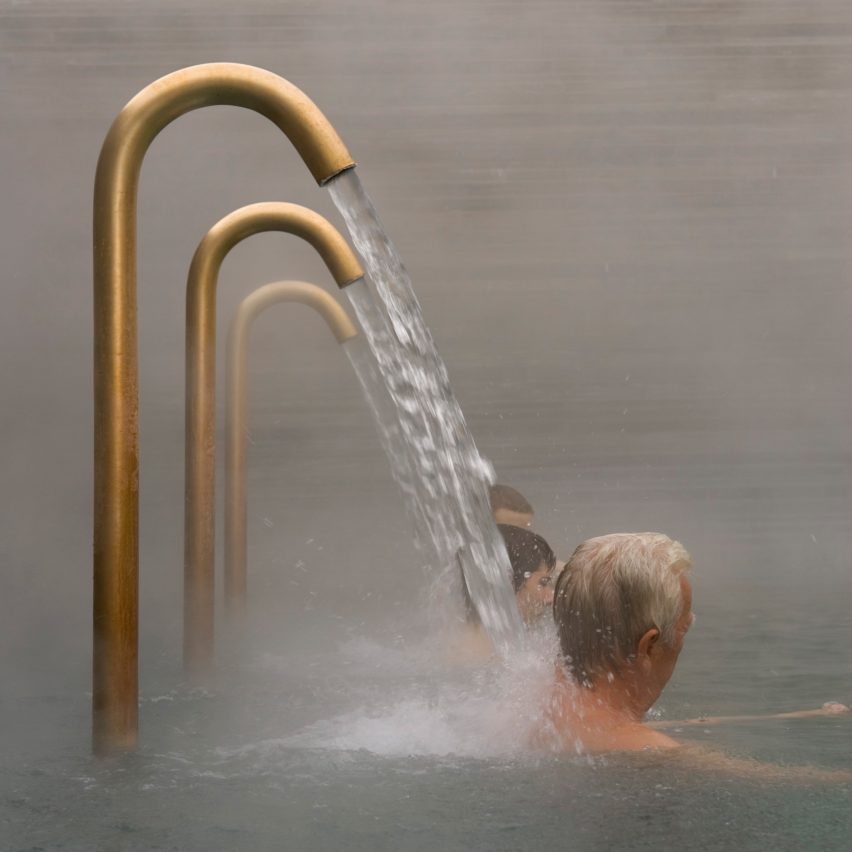
Vals is a really important benchmark for bathhouses. Its success is partly due to the building and how it reconnects to ancient bathing traditions, particularly the feel of the Roman bath. But it's also due to a revived interest in mineral water.
It's a municipal project that attracts a real mix of people – all ages, backgrounds and so on. You might say it has become a victim of its own success, but it is still an extraordinary sensorial experience.
You become very aware of the materiality of water and rock of the mountain, and you make your own route through it, meandering from one chamber or bath to another. Each space is a very different physical experience. There's an extraordinary calm and you lose your sense of time.
Muuratsalo Experimental House, Finland, by Alvar Aalto, 1952
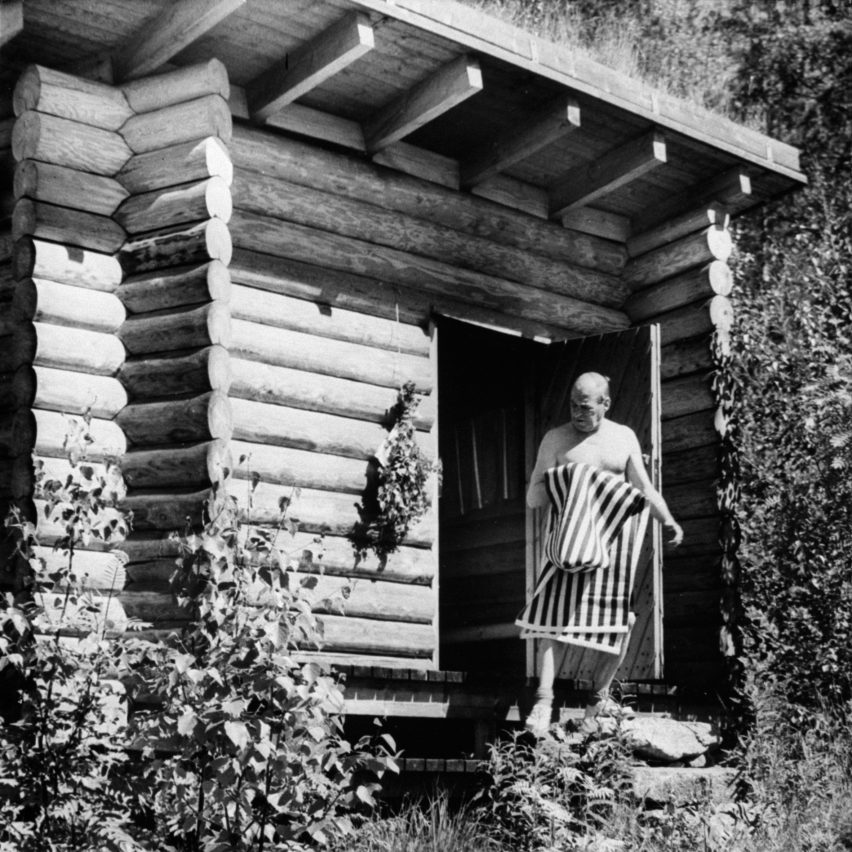
Alvar Aalto took the sauna incredibly seriously. He built a number of them and ended up going back to the traditional idea of the smoke sauna.
He had already written about Finland needing a new culture of sauna in the 1930s. I think he saw it as a cliche that had lost its route, and he wanted to bring back the cultural side of sauna.
Aalto built this smoke sauna at his own house in Muuratsalo, referencing both Finnish and Japanese traditions. It's an extraordinary refinement of a traditional sauna, through the way the wood is laid and the proportions of the building.
Termas Geomatricas, Chile, by Germán del Sol, 2006
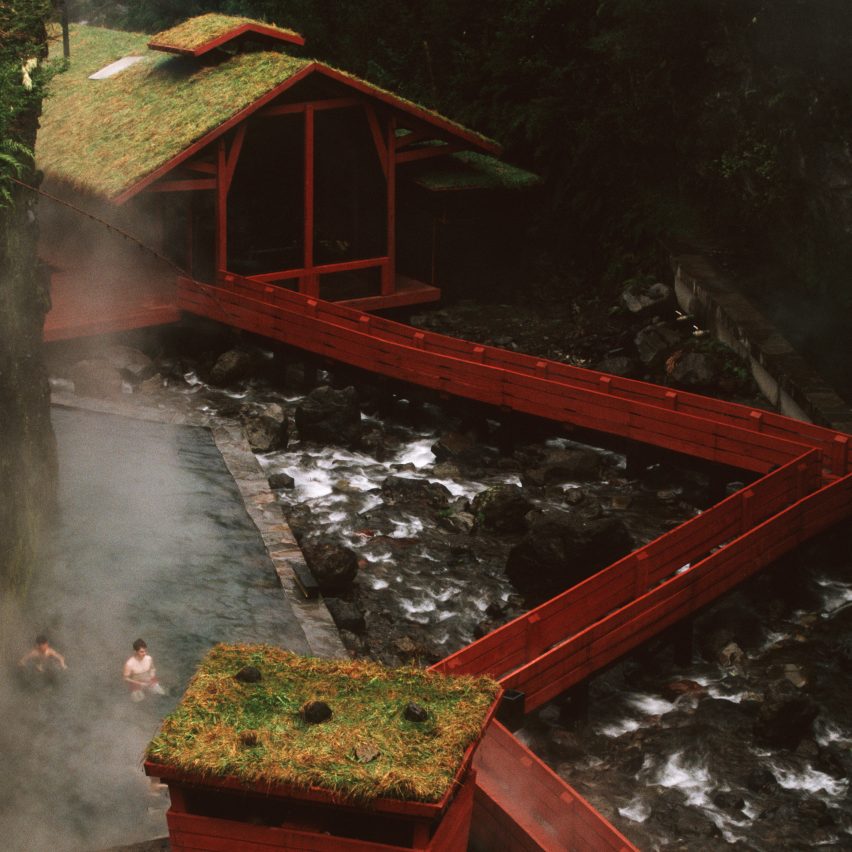
Termas Geomatricas is a bathing project in a national park. It's a volcanic area, so there are natural hot springs erupting in the landscape around a river bed.
What Germán del Sol did was create a series of 17 pools fed by natural spring water, linked by a zigzagging walkway. This red oxide walkway takes bathers from pool to pool. It's a wonderful way of harnessing the power of the natural springs to create a bathing experience. To visit it to experience the real forcefulness of nature.
Kogohi Bathhouse, Japan, by Kengo Kuma and Associates, 1999-2003
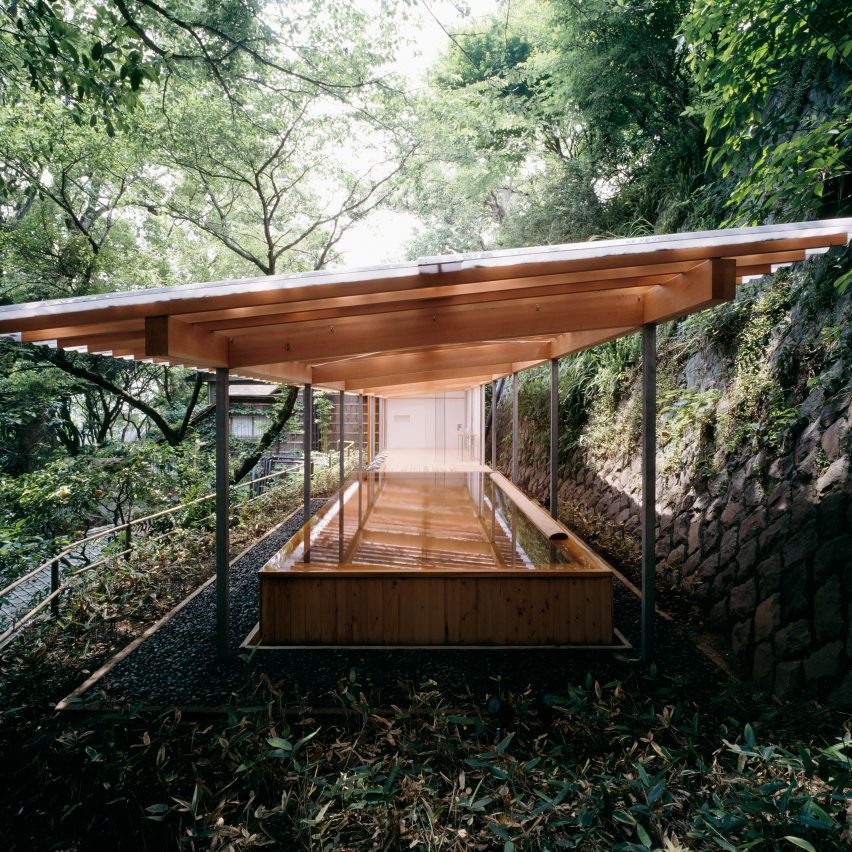
Japanese bathing tradition is extraordinary because it is a tradition that has remained unbroken, so you feel like you're benefiting from centuries of refinement. It's a big part of domestic and international tourism, going to the hot springs or the "onsen", or to the bathhouse or "sentō". There's even a Japanese expression that translates as "brothers in the skin".
Kengo Kuma's Kogohi Bathhouse is such a simple structure. It's a platform floating in the foliage with wooden baths that feature refined details. So you're soaking in nature as well as the hot water.
Gothenburg Bathing Culture, Sweden, by Raumlabor, 2014
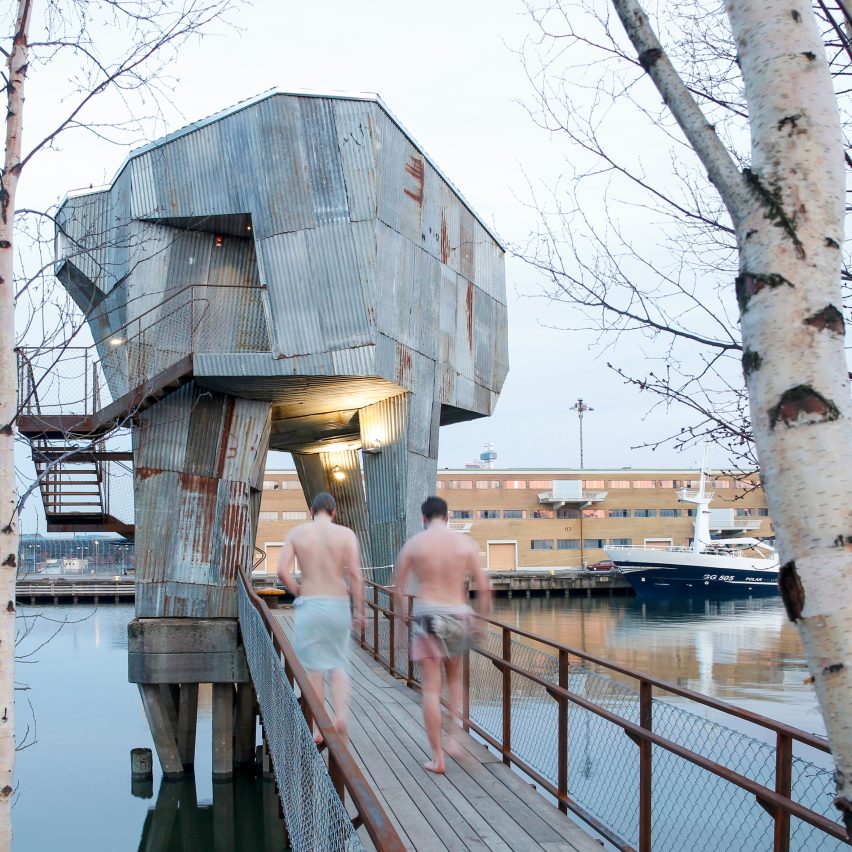
What is really interesting about Raumlabor's Gothenburg sauna is its location in a former ship docks. Bathing was used here as a catalyst for change in the neighbourhood.
It's an extraordinary hulking, corrugated building that invites naked bodies to take over the dockyards – a rather fantastic way of changing the experience of the place.
Onagawa Station Bathhouse, Japan, by Shigeru Ban, 2015
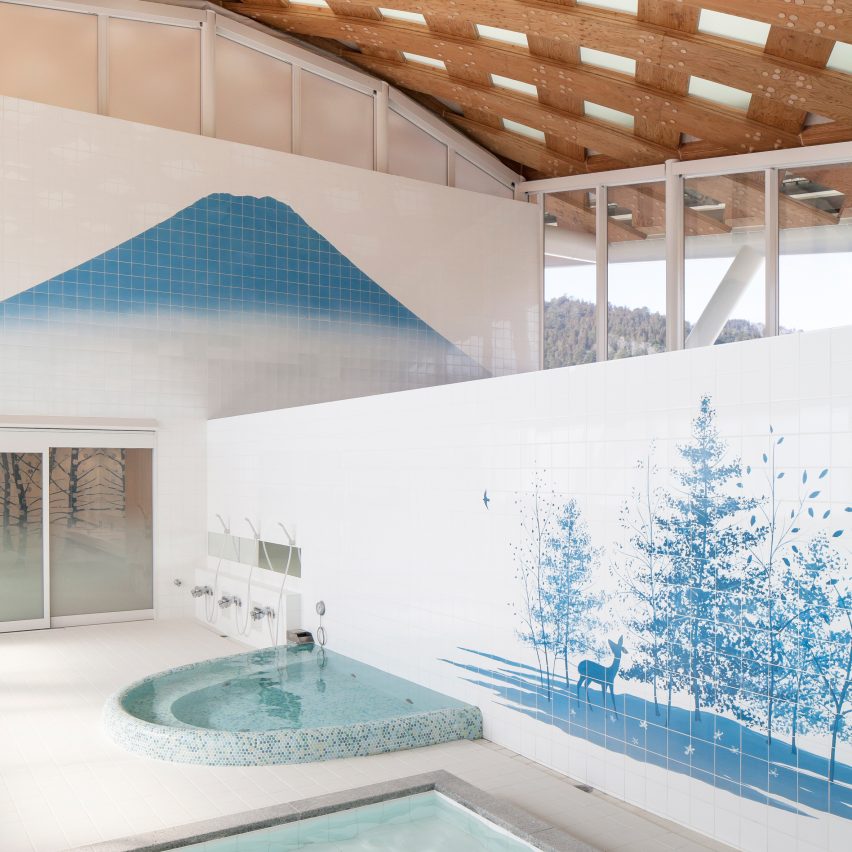
Shigeru Ban rebuilt the Onagawa station public baths after they were destroyed by the tsunami.
The baths have the traditional components of a traditional Japanese sentō – the wash station and a communal bath, plus tiled murals of Mount Fuji. These are very consistent elements that often crop up, mediative points that allow you to focus on nature even though you're indoors.
The space also has an extraordinary swooping roof made from woven timber. It is designed to symbolise a bird's wings, so you can see the building soaring into the future.